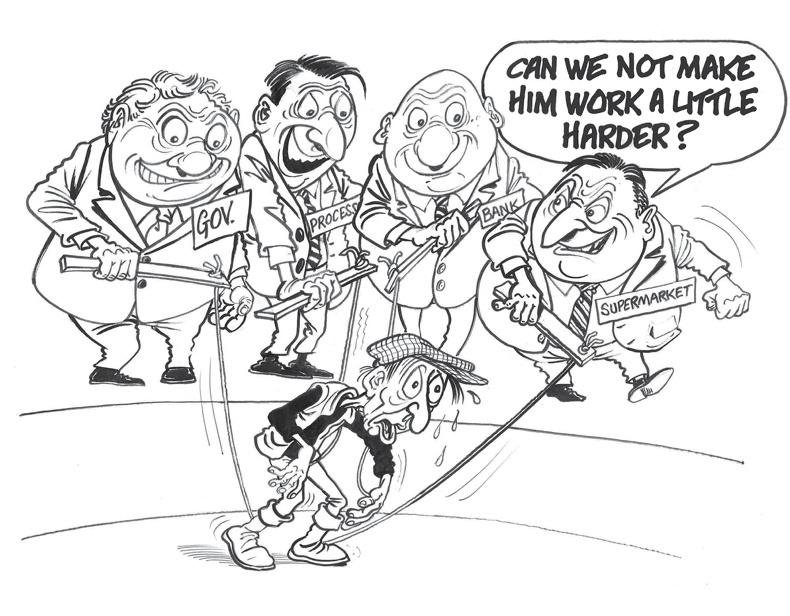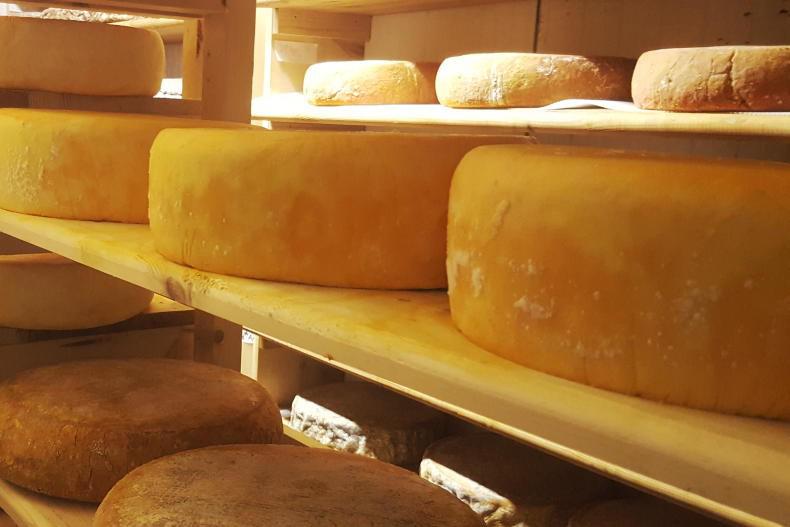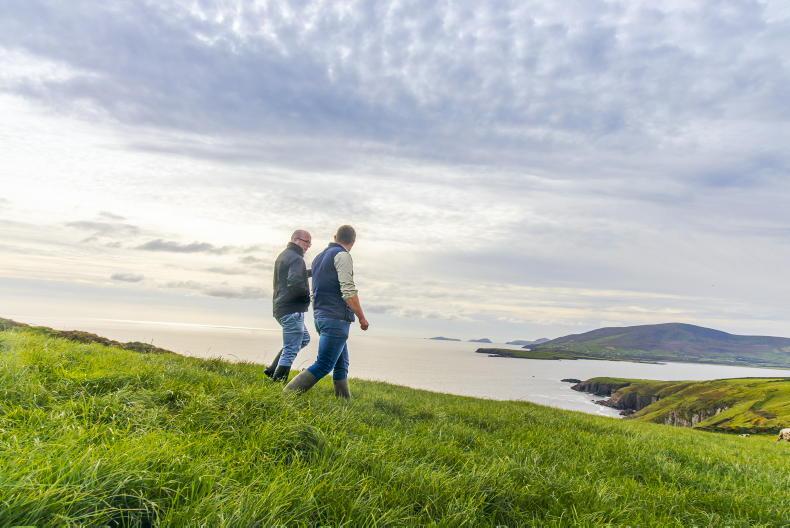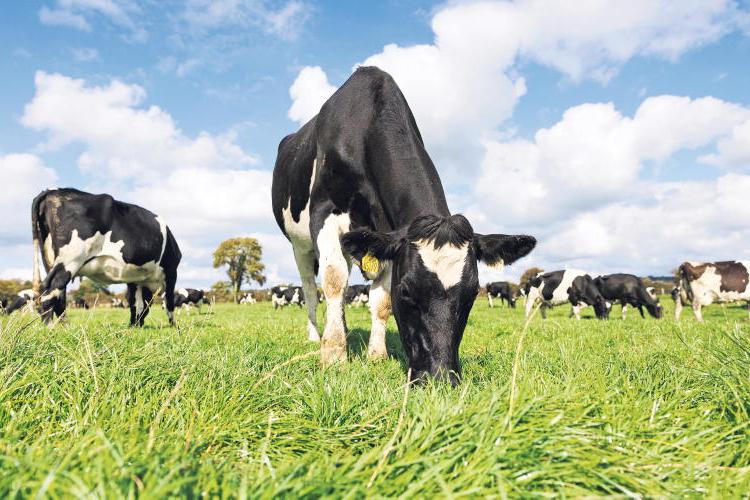The year 2016 was a remarkable one. Milk producers experienced close to a 4c per litre decrease in price as it fell to an average of 27c/litre. Prices of finished cattle fell 5% due to strong supplies and currency volatility. Cereal yields were down on 2015 levels. As a result, incomes were down across dairy, livestock and tillage farms in 2016.
But 2016 has also been a remarkable year for exports. In a year when global commodity prices fell 10%, boosted by increased output volumes, total export values for food and beverage increased 2%.
And over the last seven years, food and drink exports have expanded 41%, one-third faster than overall merchandise exports in the same period.
So who should we thank for the growth in food and drink exports? Farmers would say it was them – no doubt increased output by Irish farmers across most sectors offset lower prices and kept the export values up.
The processors will claim it was their added-value products and close customer connections that delivered. And Bord Bia and the Government will argue that it was their hard work in finding and opening up alternative markets that delivered. In fairness, it has been a combination of all three.
Perhaps, a more pertinent question is who has benefitted from this growth in exports? No doubt the Government has, with 250,000 people sustainably employed in rural Ireland because of agriculture.
Agribusiness also certainly has reaped the benefits, where every extra production unit that flows through shiny new stainless steel lines (which in many cases was paid for by farmers) makes an additional margin.
This is the fifth year of declining food prices, according to the FAO. They fell 3% in 2016. Agribusinesses, by their nature, especially those quoted on the stock exchange, are driven by the need to increase profits, earnings and dividends every year.
So when global prices drop, its easy for them to maintain their profit margins. They just squeeze the price to the farmer.
So the industry does well when farmers produce more. Jobs are created, profits increase and the economy grows. It’s no wonder politicans will be at the opening of an envelope at an agribusiness given the 10 times multiplier effect every euro invested in a primary processing plant here has on a local economy.
The farmer
But where does this leave the farmer? The industry has been ramping up its efforts over the past seven years to tell farmers that they must become more market-orientated and produce beef, sheep, grain or dairy products the market or the consumer actually wants. Meanwhile, the farmer must take on board ever stricter regulations, be sustainable, quality approved and traceable.
Farm incomes and export growth
Since 2010, the value of Irish food and drink exports has increased a cumulative 41% to reach €11.15bn last year. This is the 7th consecutive year of growth, where €3.3bn has been added to exports.
But how much of this has been trickling back to the primary producer? Let’s imagine farmers had grown the value of their output by 41% since 2010. For every farmer that amounts to on average €27,000 more than in 2010.
But according to the national farm survey carried out each year by Teagasc, the average family farm income in Ireland in 2015 was €26,000. In 2010, the average family farm income was €23,000, meaning average farm incomes have increased just 13% in the intervening period.
What is clear is that the growth in the value of Irish food and drink exports is not being passed back through the supply chain to the primary producer, despite the rapid increase in beef and dairy output in recent years.
From a policy point of view the numbers are great and the sector looks in a healthy position that is performing extremely well. But the reality is that without CAP supports, the majority of farmers are losing money.
Ireland’s food and beverage exports are now roughly equally split between the UK, continental Europe and international markets. Worryingly, exports to the UK fell by 8% or €350m over the year. This is a trend that started in January 2016 and continued after the Brexit vote.
The UK has become an increasingly difficult market that is highly competitive at retail level. Once the pound weakened against the euro, Irish products became less competitive on UK supermarket shelves and €570m was knocked off the value of exports over the course of the year. So while exports to the UK fell further this year, the industry has been moving away from the UK market over the past five to six years towards international and other EU markets and this trend was amplified in 2016.
Positively, our industry has the ability to adapt. For example, with a weaker market for cheese in the UK (which takes 53% of Irish cheese exports) processors reduced cheese production and increased butter and skim, which were making better returns. This saw more dairy product move to international markets such as China and the US.
However, beef is much more exposed to the UK market, with 50% of exports destined for that market. If the UK market doesn’t return, there are very few real options to adapt the product and ship it into other markets. This is one of the key weaknesses of the beef sector. Despite new markets opening up for beef, such as Egypt, Turkey, Algeria, the US and China, we remain heavily exposed to the UK and EU market. With near record numbers of cattle coming on stream in 2017, these markets cannot open nearly fast enough.
The mirage of international markets
In total, international markets now account for a third (31%) of all Irish food and drink exports. Since 2010, international markets have grown in value by around €1.5bn and account for half of all the food and drink export growth. In this time, exports to China have grown sixfold, while export to the US and the rest of Asia have doubled.
In 2016, Irish food and drinks exports to international markets grew by 13%, or more than €400m, to reach a record €3.5bn. Exports to the US and China, which account for 50% of all international exports, grew by a combined €400m in 2016.
Significantly, we now export €955m to the US and €840m to China. Our next-largest international market is Africa at €500m and the Middle East at €340m.
However, what these numbers do not tell us is that exports to international markets are heavily weighted towards a few products, with almost half of exports accounted for by dairy and a further 20% accounted for by beverages.
In contrast, beef and pigmeat exports to international markets account for 4% and 5% respectively.
Looking at the US, 70% of all export value is derived from beverage (whiskey and beer) exports. While exports to the US of butter and cheese have doubled in recent years, they still account for just 10%, or around €100m.
Similarly in China, where we have seen 35% growth in exports in the last year, Irish exports to this market are heavily weighted towards one product. Approximately 70% of all Irish exports to China are infant formula, while other dairy powders account for a further 5%.
Irish pork exports to China grew strongly in 2016, with around 65,000t of pigmeat shipped to this market. Outside of these three products, exports to the Chinese market are fractional.
The looming threats posed by Brexit mean our reliance on international markets could be set to increase in the years ahead. But as we can see right now, the range of Irish food sold into these markets is extremely narrow.
Albeit mainly operating in the commodity space, our dairy industry has successfully diversified into a very broad range of markets.
The weakness in the UK market last year meant dairy companies adapted their product mix. This is all very well once the US butter market remains strong or infant formula demand continues in China.
However, our meat sectors have not been able to replicate this and remain heavily dependent on the UK and EU markets.
Currency weakness hits buying power of oil economies
The markets in the Middle East and north Africa were once seen as the great white hope for Irish food exports. Between 2011 and 2015, Irish food exports to the Middle East increased by almost a third, while exports to Africa increased by close to 50%.
However, 2016 saw exports to the Middle East region decline 4%, while exports to Africa were back 12%. No doubt the decline in global oil prices has weakened the buying power of these markets.
Oil accounts for over 95% of exports for countries like Libya and Algeria. With oil prices falling to lows of $28/barrel in the past two years, the local economies in these countries have been upended.
Domestic currencies have weakened as the oil price has dwindled, while inflation in some places is running at double digit figures.
Inward-looking
With the UK and the US becoming what seems to be more inward looking, is this something that the Irish food industry should look at? Prepared consumer foods across all secotrs accounts for 23% of exports or around €2.5bn. However, Ireland imports far in excess of this – close to €3bn. And the majority (65%) of prepared consumers foods exports is destined for the UK. As a result of weak sterling, these products became less competitive on the UK shelf and €160m was wiped off over the year. Is it time that the industry looked at replacing some of the imported product and start supporting local businesses?
So while the export numbers point to growth, adaptability and diversification, has the industry been lucky or strategic when so much that happens in export markets is outside the control of farmers, agribusinesses and even governments?
In an era where a tweet or the stroke of pen can elect a president, topple a prime minister or even close a market (Russia), how can Irish exporters prepare and mitigate for these types of risks?
Is the sector prepared to handle the vagaries of political decisions, fickle consumers or populist voters in foreign countries? Can Ireland really strategically align with regions to minimise risk to supply chain disprution?
Obviously, as a commodity producer Ireland needs as many markets open to it as possible. Dairy, while diversified, is increasingly exposed to global markets.
The mushroom sector is an example of when things go wrong. In a year when prices collapsed because of currency exposure, volumes of mushrooms increased to the UK, simply because there was no alternative market.
For the past year, Irish agribusiness has been in a defensive state in the UK, trying to hold on to position. But it still lost. The Government and Bord Bia need to ensure Irish agribusinesses can defend their positions, extend their market reach, and look for opportunities through market diversification. This way export growth can better deliver for farmers, agribusiness and the economy.











SHARING OPTIONS